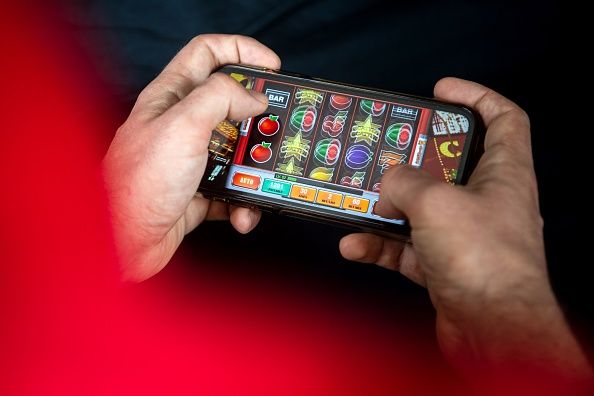Art and culture have always played a pivotal role in shaping human society. From the cave paintings of our ancestors to the digital expressions of today, they reflect our thoughts, beliefs, and the world around us. In this exploration, we dive deep into the evolution of art and culture, particularly focusing on the revolutionary ideas that emerged from 90jili 90 jili. This journey illuminates the interconnectedness of creative expression and societal developments.
The Roots of Artistic Expression
Art can be traced back to prehistoric times. The earliest examples found in caves, created by ancient peoples, were a means of communication and documenting their environment. Over time, these expressions evolved through various cultures and societies, each adding their unique touch to the artistic landscape.
With the dawn of civilization, art began to take more structured forms. Ancient Egyptians, for example, used art for religious and ceremonial purposes, which was a reflection of their beliefs and values. Similarly, the Greeks celebrated humanism, creating sculptures that appreciated the beauty and perfection of the human form. These early expressions set the foundation for the development of art as we know it today.
The Renaissance: A Turning Point
The Renaissance constituted a profound transformation in the realm of art, heralding an age of enlightenment. Artists like Leonardo da Vinci and Michelangelo pushed the boundaries of creativity, focusing on human emotion and the natural world, which led to the advent of modern techniques in painting and sculpture. This period emphasized the importance of individualism, which fostered diverse expressions of identity and cultural narratives.
The Industrial Revolution and Its Impact
The Industrial Revolution brought about astonishing changes not only in production but also in social structures. This era witnessed the birth of new artistic movements, such as Romanticism, which celebrated emotion and the sublime. The proliferation of new technologies enabled artists to explore different mediums and styles, resulting in the emergence of Impressionism, Post-Impressionism, and eventually Modern Art.
The accessibility of art increased during this time, allowing broader segments of society to engage with and influence artistic trends. This democratization of art opened avenues for diverse perspectives, aligning with the ethos of 90 jili which champions inclusive artistic exploration.
Globalization and Cross-Cultural Exchanges
As the world became more interconnected through globalization, so too did the spheres of art and culture. Artists increasingly drew inspiration from a myriad of cultural influences. The fusion of styles and techniques became commonplace, with movements like Surrealism and Abstract Expressionism reflecting a deeper understanding of the human psyche and its complexities.
Exhibitions and art fairs began to showcase work from artists around the globe, creating a vibrant tapestry of cross-cultural dialogues. This shift not only diversified artistic expressions but also promoted cultural appreciation and understanding, leading to a richer cultural landscape.
The Digital Age: A New Frontier
As we ventured into the twenty-first century, the digital revolution transformed the artistic landscape once again. Artists began to explore new mediums, including digital art, video installations, and virtual reality. Platforms like social media enabled artists to reach wider audiences, bypassing traditional gatekeepers and allowing for direct engagement with fans and fellow creators.
The rise of digital art has fostered an entirely new realm of creativity, facilitating the exploration of complex themes such as identity, community, and technology’s role in shaping our lives. Artists at 90 jili exemplify this trend by blending technology with traditional artistic sensibilities, pushing the boundaries of what art can be.
The Role of Art in Social Movements
Throughout history, art has served as a powerful tool for social change. From the political posters of the 1960s to contemporary street art, artists have used their work to comment on and challenge social injustices. Movements such as feminism, civil rights, and environmental activism have found expression through various artistic forms, amplifying voices that are often marginalized.
Art engages the public, invites dialogue, and inspires action, demonstrating its inherent power within society. The contributions of artists in advocating for change resonate profoundly, as seen through works that address pressing contemporary issues.
Looking Ahead: The Future of Art and Culture
As we continue to evolve amidst rapid technological advancements and shifting societal values, the future of art is filled with exciting possibilities. Collaborations between artists from various disciplines may lead to the creation of hybrid art forms that challenge traditional definitions. Moreover, global issues such as climate change and social inequality are likely to shape the narratives that artists choose to explore.
Moreover, platforms that prioritize diverse voices and challenging established norms will play a significant role in cultivating a more expansive understanding of artistic expression. The ethos of inclusivity nurtured by movements like 90 jili will be pivotal in driving this evolution forward.
Conclusion
The journey of art and culture is a testament to human creativity and resilience. From ancient cave paintings to digital installations, each phase represents a significant chapter in the ongoing narrative of human expression. Understanding this evolution enables us to appreciate the complexity of today’s artistic landscape and recognize the profound impact that art continues to have on society. As we look to the future, it is crucial to celebrate diversity in artistic voices and uphold the spirit of innovation. By doing so, we can ensure that art remains a relevant and influential force that continues to inspire generations to come.



